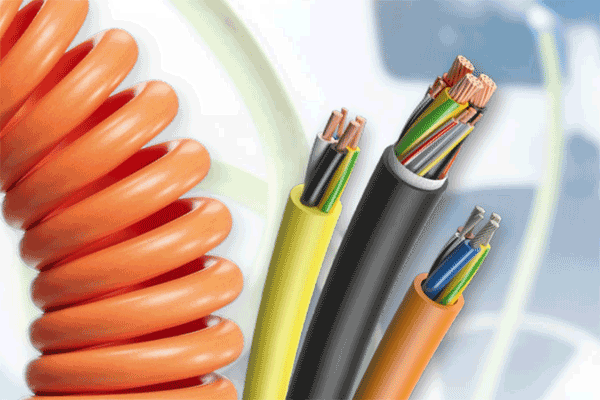The rapid growth of electric vehicles has led to an increased demand for efficient and reliable charging infrastructure. As an EV charging station operator, selecting the right charging cables is essential to ensuring a smooth and safe experience for your customers. In this article, we will delve into the factors to consider when sourcing suitable EV charging cables.

Understanding EV Charging Standards and Connectors
Before selecting the right cable, it’s crucial to understand the various charging standards and connectors available in the market. The two primary global standards are:
- SAE J1772 (Type 1): Predominantly used in North America and Japan, this connector supports single-phase AC charging up to 19.2kW.
- IEC 62196 (Type 2): Commonly used in Europe, China, and other regions, this connector supports single- and three-phase AC charging up to 43kW and DC charging up to 200kW (for the Combined Charging System or CCS variant).
Ensure your EV charging station supports the most common connector types in your region, while also accommodating other standards to cater to a wider range of EV models.
Selecting the Right Cable Type
There are three primary cable types to consider for your EV charging station:
- Mode 2 Cables: Ideal for home charging and emergency situations, these cables connect the EV to a standard household power outlet. They typically support charging powers of up to 3.7kW.
- Mode 3 Cables: Designed for public and private charging stations, these cables offer faster charging speeds, with power levels ranging from 3.7kW to 43kW.
- DC Fast Charging Cables: For rapid charging stations, DC fast charging cables provide high-power DC charging, enabling charging powers of up to 350kW.
Select the appropriate cable type based on your charging station’s power output, customer requirements, and budget constraints.
Cable Length and Flexibility
Choosing the right cable length is essential to provide a convenient and accessible charging experience for your customers. Common cable lengths range from 3 to 10 meters. Longer cables offer more flexibility but may be challenging to manage and maintain. Consider the layout of your charging station and the parking arrangements to determine the most suitable cable length.
Additionally, prioritize cable flexibility to ensure ease of use, especially in colder climates where cables may stiffen. Opt for cables with a high-quality insulation material that remains flexible even at low temperatures.
Cable Capacity and Temperature Range
The capacity of a charging cable determines the maximum current it can safely carry. This capacity depends on the cable’s cross-sectional area, typically measured in square millimeters (mm²). The larger the cable’s cross-sectional area, the higher its current-carrying capacity.
Cable capacities range from 16A to 125A, corresponding to charging powers from 3.7kW to 350kW. Match the cable’s capacity to your charging station’s power output and the EVs you intend to serve.
Moreover, consider the cable’s temperature range, ensuring it can withstand extreme temperatures without compromising safety or performance. This is particularly important for outdoor charging stations exposed to harsh weather conditions.
Safety and Compliance
Select cables that meet international safety and quality standards, such as the IEC 61851-1, IEC 62196, and UL 62. These certifications ensure that the cables are designed and manufactured to provide a safe and reliable charging experience.
Consider cables with integrated safety features such as over-temperature protection, over-current protection, and short-circuit protection. These features will help protect both the charging equipment and the EVs from potential damage, ensuring a safe and efficient charging process.
Cable Durability and Maintenance
Investing in durable and low-maintenance cables will save time, effort, and money in the long run. Look for cables that feature high-quality materials, such as thermoplastic elastomers (TPE) or polyurethane (PU) for insulation and sheathing. These materials provide excellent resistance to wear, abrasion, and environmental factors, ensuring a long service life.
Additionally, opt for cables with UV-resistant and water-resistant properties, particularly for outdoor charging stations where cables are exposed to sunlight and precipitation. Regularly inspect and maintain the cables to prevent potential issues and prolong their lifespan.
Customization and Branding
Many cable manufacturers offer customization options, allowing you to tailor the cables to your specific requirements. Customization may include color, branding, or even incorporating additional features such as LED indicators or smart charging capabilities.
Take advantage of these customization options to create a unique and consistent brand identity for your charging station, enhancing its appeal to customers and promoting brand recognition.
Supplier Selection and Pricing
Finally, carefully consider the supplier from which you source your EV charging cables. Choose a reputable manufacturer with a track record of providing high-quality, reliable cables that meet international safety and performance standards.
Compare prices and warranty terms among different suppliers to strike a balance between cost and quality. Keep in mind that cheaper cables may not always be the best choice, as they may compromise on quality and durability, resulting in higher long-term costs due to frequent replacements and maintenance.
SETEC POWER, as a leading manufacturer of charging infrastructure, is committed to not only enhancing the performance and power of our chargers but also incorporating the most reliable and advanced EV charging cables in our products. This ensures that our customers can rely on high-quality and affordable solutions for their charging needs. Please do not hesitate to contact us. Our team of experts is ready to assist you in selecting the most suitable solutions tailored to your specific requirements and budget constraints. Together, let’s drive the electric vehicle revolution and create a greener world.














